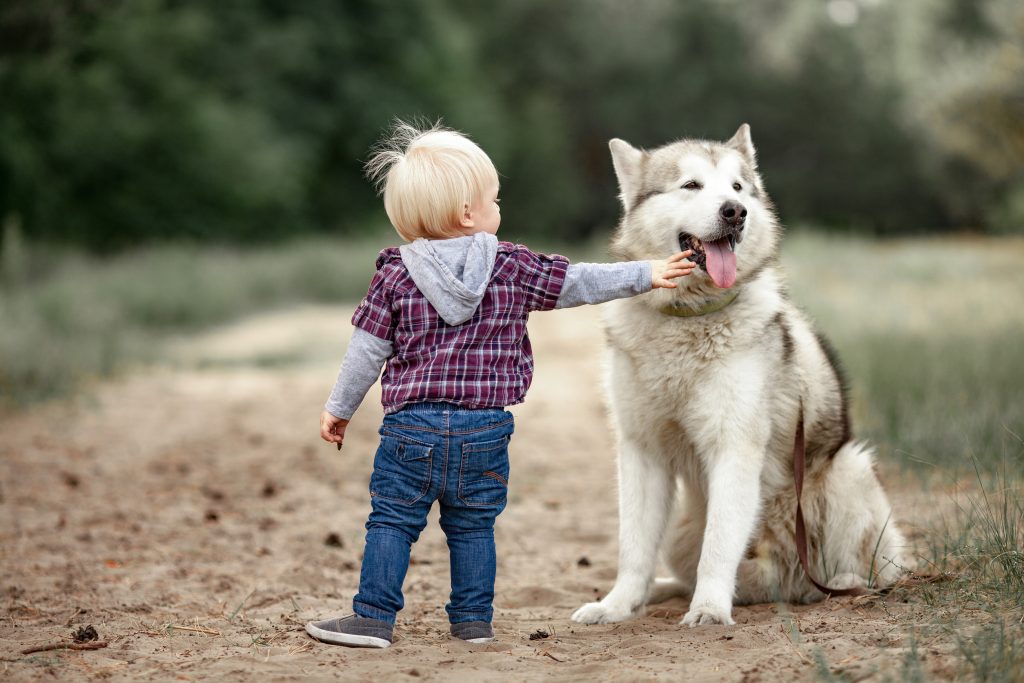
Dog bites can happen in an instant, and the aftermath is often traumatic for everyone involved—especially when children are the victims. While many families trust their pets completely, certain actions or behaviors can unintentionally provoke even the calmest dog. Teaching kids how to interact safely with animals is just as important as teaching them to look both ways before crossing the street. In many cases, a trigger that causes dogs to bite children is preventable when parents understand what triggers them and how to guide their child’s behavior. Keeping children safe around dogs starts with awareness, respect, and a few simple rules.
1. Hugging or Leaning Over Dogs
While a hug might feel like love to a child, dogs often interpret it as a threatening gesture. Being squeezed or leaned on can make a dog feel trapped, especially if the dog doesn’t have a way to move away. Children often place their faces near a dog’s head during a hug, putting them at risk of a bite to the face or neck. Even well-socialized dogs bite children if they react defensively to physical restraint. Instead of hugging, children should be taught to pet a dog’s back or side gently.
2. Approaching Dogs While They’re Eating
Food aggression is a common reason dogs lash out, even in their own homes. Children who approach or try to take food from a dog’s bowl may trigger an instinctive reaction. Dogs are naturally protective of their resources; even a quick move toward their food can be seen as a threat. It’s best to teach children to give dogs space while they eat, just as they would expect someone to respect their own mealtime. Establishing this boundary helps prevent tension and builds mutual trust.
3. Pulling on Ears, Tails, or Fur
Young children often explore the world with their hands, and that can include grabbing, tugging, or poking. Unfortunately, pulling on a dog’s tail or ears can cause discomfort, pain, and confusion. Some dogs will tolerate it for a while, but most have a limit, and biting may become their only communication method. It’s crucial to model gentle touch and explain that dogs feel pain just like people do. Respecting a pet’s body helps maintain a calm and friendly relationship.
4. Running or Screaming Around Dogs
Sudden movements and loud noises can trigger a dog’s chase instinct or make them feel anxious and overstimulated. Kids who run past a dog or shriek in excitement might not mean any harm, but the dog may not understand their intent. Some dogs react by barking, lunging, or nipping in response to the chaos. Active play should happen away from pets or only under close supervision. Calm, predictable behavior around dogs creates a safer environment for everyone.
5. Ignoring a Dog’s Warning Signs
Dogs rarely bite out of nowhere—they usually give signals first. Growling, showing teeth, stiff posture, and pinned ears are all signs that a dog feels uncomfortable or afraid. Children who haven’t been taught to recognize these cues may push the dog past its limit. Teaching kids to stop, step back, and alert an adult if a dog seems uneasy can prevent dangerous interactions. Understanding canine body language is an essential part of respectful pet ownership.
6. Waking a Sleeping Dog
Startling a sleeping dog can be risky, even if the dog is normally calm and affectionate. Like people, dogs may wake up disoriented and instinctively react to perceived threats. Children often want to cuddle or play the moment they see a dog resting, not realizing the dog needs space. Remind kids to give sleeping dogs privacy and wait until the dog is fully awake and aware. This small habit helps avoid accidental bites caused by fear or surprise.
7. Treating Dogs Like Toys
Dogs may be part of the family, but are not stuffed animals. Dressing them up, climbing on them, or trying to ride them can cause stress or physical pain. While some dogs may tolerate this behavior for a short time, most do not enjoy it, and it can erode their tolerance quickly. Respecting a dog as a living, feeling creature is key to keeping both kids and pets safe. Teaching boundaries is a form of kindness, not restriction.
Bite Prevention Starts With Education and Empathy
Dog safety isn’t just about rules—it’s about building empathy, awareness, and respect between kids and animals. Understanding why dogs bite children helps prevent accidents, but more importantly, it strengthens the bond between pets and children. When families take time to teach safe interactions, dogs are more likely to feel secure, and kids are less likely to be harmed. These small lessons are acts of protection, not just for children, but for the dogs they love. Everyone wins when safety comes first.
What rules do you have in place for your kids around dogs? Share your family’s pet safety tips and stories in the comments.
Read More:
6 Dog Breeds That Will Fiercely Protect Your Children
Is Your Dog Ready to Be a Big Brother or Sister?
The post 7 Behaviors That Make Dogs Bite Children appeared first on Kids Ain't Cheap.







